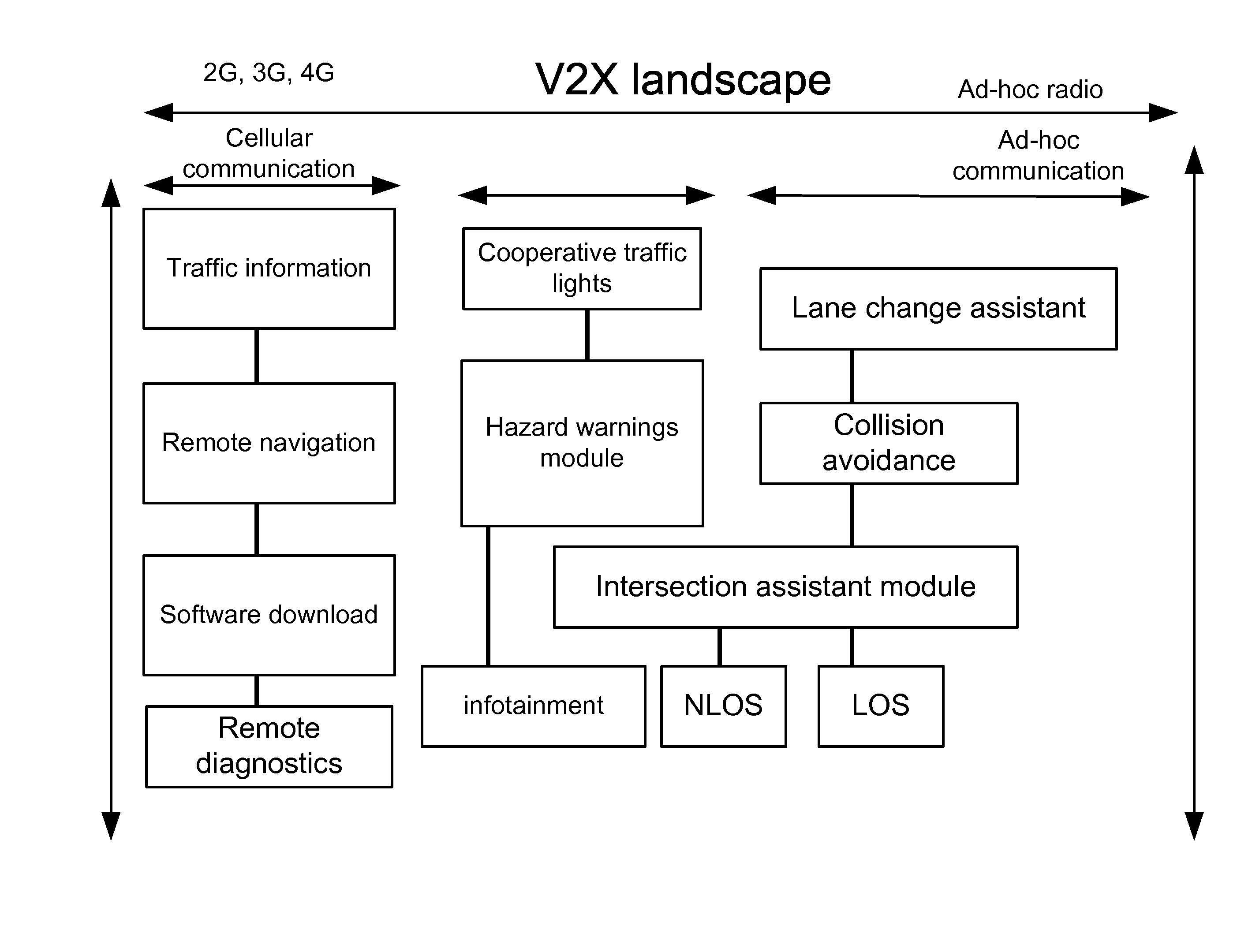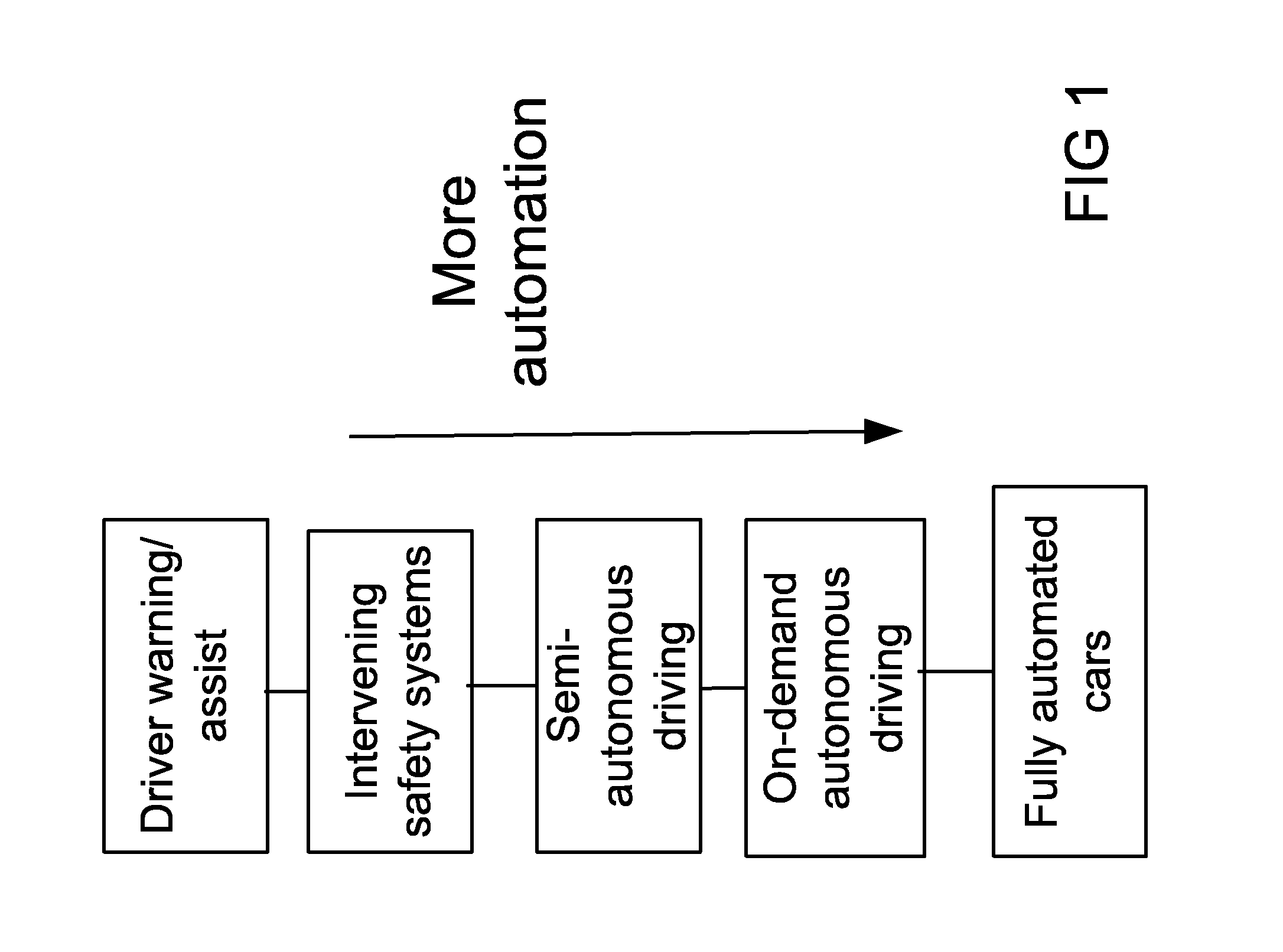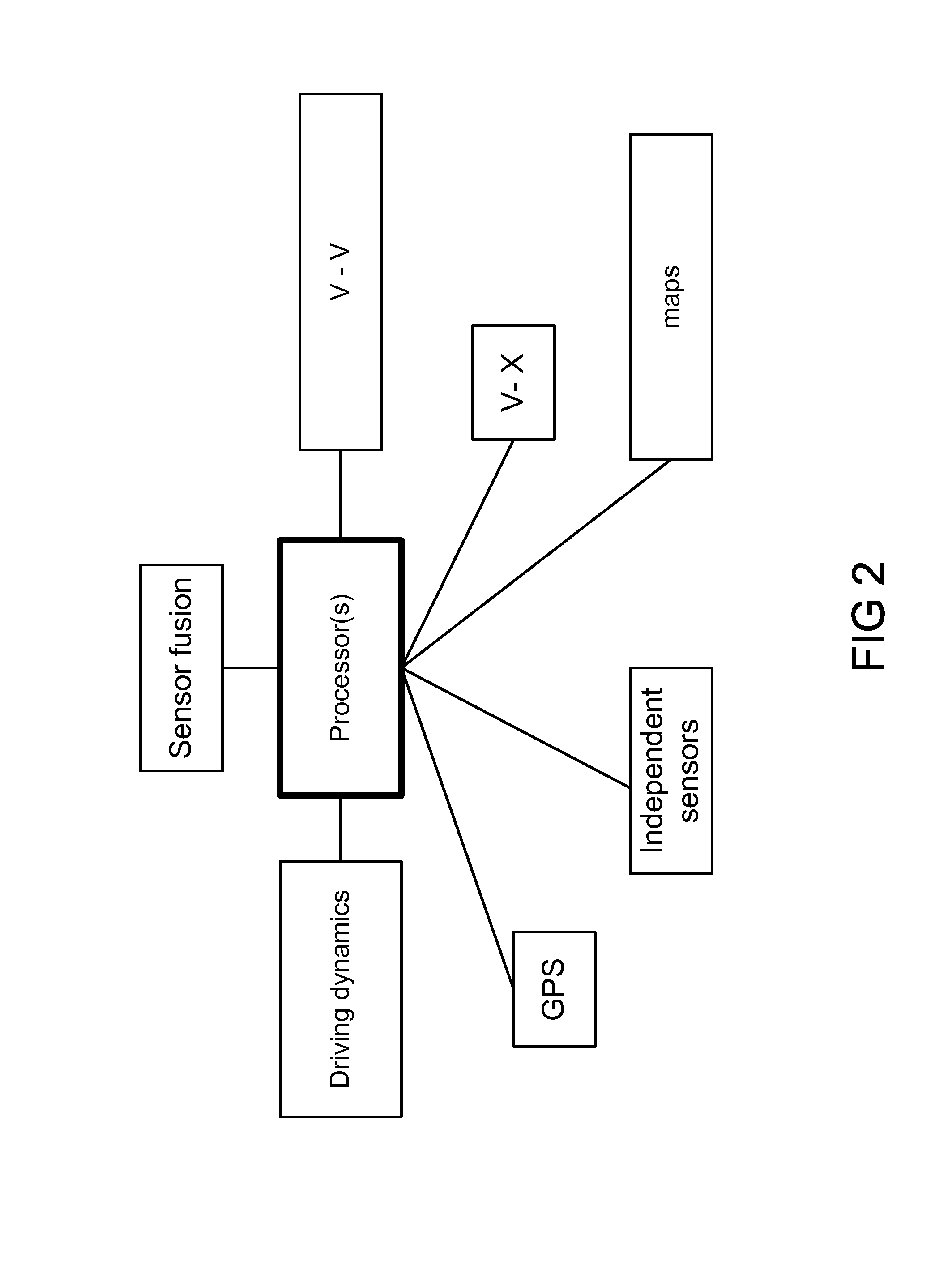System and method for lane boundary estimation and host vehicle position and orientation
a technology of host vehicle and lane boundary, which is applied in vehicle position/course/altitude control, process and machine control, instruments, etc., can solve the problems of difficult detection and tracking of all lane boundaries using a vision system, and achieve the effect of saving a vision system cos
- Summary
- Abstract
- Description
- Claims
- Application Information
AI Technical Summary
Benefits of technology
Problems solved by technology
Method used
Image
Examples
Embodiment Construction
[0027]FIG. 1 is for one embodiment, as an example, for representation of development of fully automated vehicles, in stages, for progression toward fully automated vehicles. FIG. 2 is for one embodiment of the invention, for a system for automated vehicles, using GPS, independent sensors, and maps, for vehicle interactions, driving dynamics, and sensor fusions and integrations.
[0028]FIG. 3 is for one embodiment of the invention, for a system for automated vehicles, with different measurement devices, e.g., LIDAR (using laser, scanner / optics, photodetectors / sensors, and GPS / position / navigation systems, for measuring the distances, based on travel time for light), radar, GPS, traffic data, sensors data, or video, to measure or find positions, coordinates, and distances. The government agencies may impose restrictions on security and encryption of the communications and data for modules and devices within the system, as the minimum requirements, as the hackers or terrorists may try to ...
PUM
 Login to View More
Login to View More Abstract
Description
Claims
Application Information
 Login to View More
Login to View More - R&D
- Intellectual Property
- Life Sciences
- Materials
- Tech Scout
- Unparalleled Data Quality
- Higher Quality Content
- 60% Fewer Hallucinations
Browse by: Latest US Patents, China's latest patents, Technical Efficacy Thesaurus, Application Domain, Technology Topic, Popular Technical Reports.
© 2025 PatSnap. All rights reserved.Legal|Privacy policy|Modern Slavery Act Transparency Statement|Sitemap|About US| Contact US: help@patsnap.com



